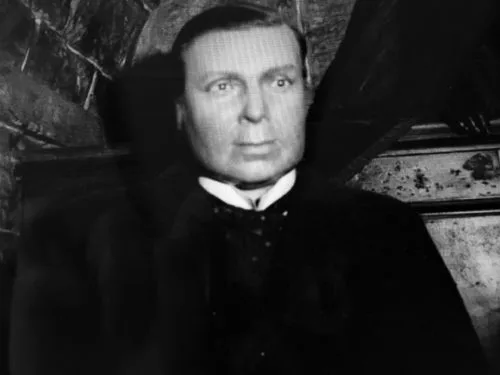James Bloomfield Rush - Norfolk
Where the murders took place: Image taken from: http://www.londonancestor.com/norfolk/stanfield-hall.htm.
The gory murders of Isaac Jemy and his son also named Isaac on the 20th of November 1848, shocked polite Victorian society but also made it a capitalizing event with all the pottery models and murder mansions sold to the morbidly fascinated public. Thousands of people crowded the streets of Norfolk castle in April 1849 to witness the perpetrator, James Bloomfield Rush hanged for his crime.
James Bloomfield Rush was born on the 10th of January 1800, the illegitimate child of Mary Rush. Some likely suspected that it was William Howes who promised James' mother marriage but subsequently betrayed her and was eventually sued successfully (no mean feat by Victorian standards). On the 28th of May 1828, Rush married Susannah Soames, from a well-known family. They had nine children together: Mary, James, John, William, Eleanor, Johnathan, Horace, Susannah and Joseph. In 1835, Rush rented a farm in Felmingham from the Rev. George Preston, when Preston died in 1837, he was succeeded by Rush's eventual victim Isaac Preston.
A sketch of James Bloomfield Rush. Image taken from https://headstuff.org/culture/history/james-bloomfield-rush-a-will-to-murder/
1844 was a year of misfortune for the Rush family, both John Rush (James's stepfather) and Mary Rush his wife died. John aged 69, apparently died from the accidental discharge of a gun leaving his £7,000 estate to his wife Mary. Ironically, Mary who was 68 at the time, also died in mysterious circumstances and left the money to her children. It was also thought that Rush, added a codicil (a condition) that the money would only be inherited when all the children were 18. Some argue that Rush stole the money in order to save himself from bankruptcy although this has never been conclusively proven. Furthermore, James' wife Susannah had also died at the age of 46, leaving behind her husband and nine children.
Because the children were very young, Rush hired a governess called Emily Sandford who was 23 at the time. Rush began having an affair with Sandford, under the pretext of offering her marriage. Sandford was then pregnant with Rush's child; she gave birth in the early months of 1848 although the child subsequently died.
Elizabeth Sandford at Rush's trial: https://headstuff.org/culture/history/james-bloomfield-rush-a-will-to-murder/
Isaac Jemy (Preston) who had his name changed by inheriting the Stanfield estate, was owed £5,000 by his tenant Rush for the purchase of Potash Farm. Because this deadline was fast approaching, James Rush who was disguised shot both Isaac Jemy, his son Isaac Junior on the doorstep of the Stanfield estate. He also shot, Junior's pregnant wife and the maid Eliza Chestney, although they later survived. It was thought that Jemy was involved in some legal disputes about the ownership of the estate, and Rush hoped that one of the rival claimants would have been blamed. And that with his disguise he would not have been recognized. However, a servant at the hall did recognize Rush and the police called round the following morning to arrest him.
Bloomfield-Rush at his trial: Image taken from: https://www.northnorfolknews.co.uk/news/22799379.auction-will-bring-back-life-one-norfolks-notorious-victorian-murders/
In a shocking turn of events, at Rush's trial his girlfriend Eliza Stanford became a star witness for the prosecution. It was the ultimate betrayal, the person who he had intended to use as an alibi had outmaneuvered him. When Rush questioned her himself, (as he represented himself in court), he was far more focused on her betrayal than on her evidence. He was even quoted as saying this:
“My friends and home to me were dear, the trees and flowers that blossomed near, the sweet-loved spot where youth began. Is dear to every Englishman.”
“If Jermy had but kindness shown, and not have trod misfortune down, I ne'er had fired the fatal ball, that caused his son and him to fall.”
“Oh, Emily Sandford, was it due, That I should meet my death through you? If you had wished me well indeed, how could you thus against me plead?”
Furthermore, one of the victims Eliza Chestney was even brought in to testify that Rush was the killer. Even the motive for the murders was indisputable, James Rush would have indeed been better off if the Jemy's were dead as he could claim the farm and have the rent to his other properties sizably reduced. With all this evidence, Rush was finally sentenced to death at Norfolk castle, which was carried out on the 23rd of April 1849. Rush could be heard saying to the executioner: "For God's sake, give me rope enough. Don't be in a hurry, take your time" and "Put the knot a little higher up, don't hurry". After this Rush fell to his death, with the uproarious applause of the crowd.
Waxwork at Madame Tussauds: Image taken from: https://rvhavinfun.com/index.php/2018/05/25/special-edition-madame-tussaud-05-24-18/
Resources
https://jermy.org/jbrush.html
http://www.britishexecutions.co.uk/execution-content.php?key=1478
https://www.northnorfolknews.co.uk/news/22799379.auction-will-bring-back-life-one-norfolks-notorious-victorian-murders/
https://headstuff.org/culture/history/james-bloomfield-rush-a-will-to-murder/









No comments:
Post a Comment